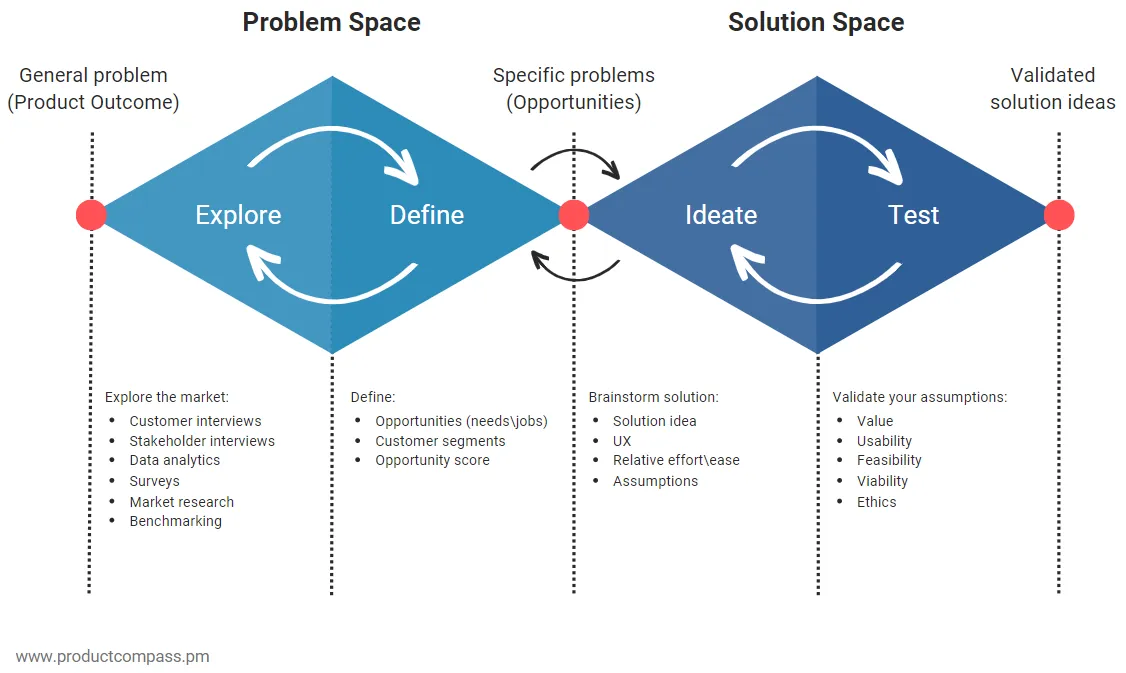Product thinking for cloud native engineers
How & Why
- IT was a cost center for a long time - not it’s critical but still treated as a cost center
- Why is it important: To much focus in the technical aspects instead of value delivery
- Importance: Show the value of your work (which means your work has to provide value)
- Operations and coordination work is not easily visible, but very important
Principles
- Focus on user value: User problems > Solutions
- Outcome (Value) > Output (Tickets closed)
- Products (lifecycle and ownership) before projects (just setting stuff up)
User value
- “Who is the user”: Builders, Enablers, Regulatory, “Viewers”
- “What is the value”: Make the organization more efficient while avoiding risks
How to start?
Exploring the Problem Space
Goals:
- Identify top pains
- Build empathy and understanding
- Investigate key business aims
Techinques:
- Customer and stakeholder interviews: Talk to people, they will probably tell you about their pain
- Data/Process analysis: Where are out bottlenecks
- Shadowing: Really see how the day to day works
- Ask “Why”
- Read business updates (current goals)
- Build dashboards that show progress and value
Defining the problem space
Goals:
- Identify opportunities
- Prioritise
- Gather insignts and data
Techniques:
- Value stream mapping
- RICE, Value vs Effort or ather cost benefit analysis
- Analyse your exploration process
Did we reach our goal?
Product metrics
- Someone will measure your work, hope they do it right or rather do it yourself to show how you provide value
- Product metrics should measure outcome not output (or performance metrics)
- Baseline: You need to know the desired outcome
Frameworks
- DevEx: Triangle of flow state (build&test speed), feedback loops () and cognitive load (code complexity, docs clarity)
- DORA
- SPACE
- DX Core 4
